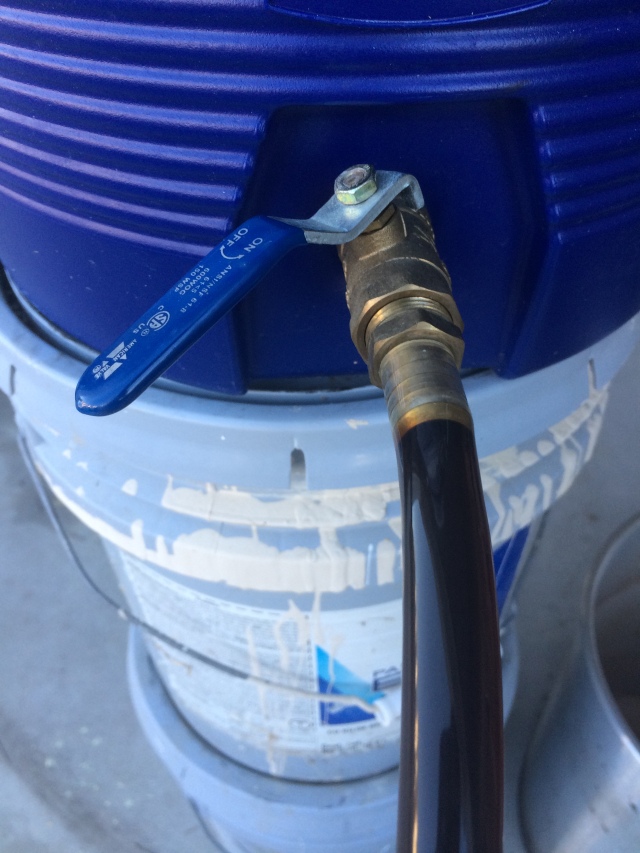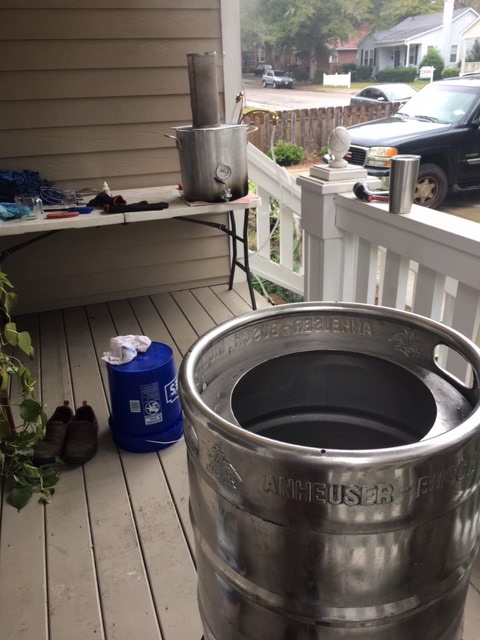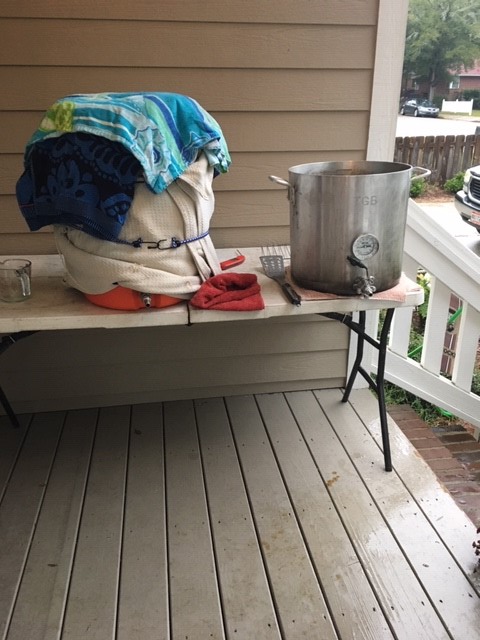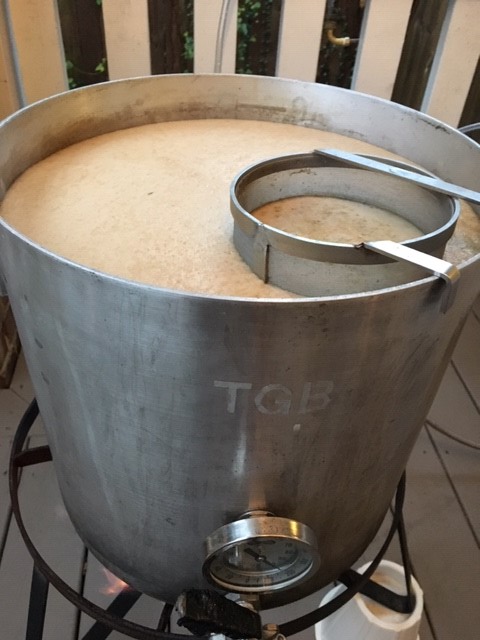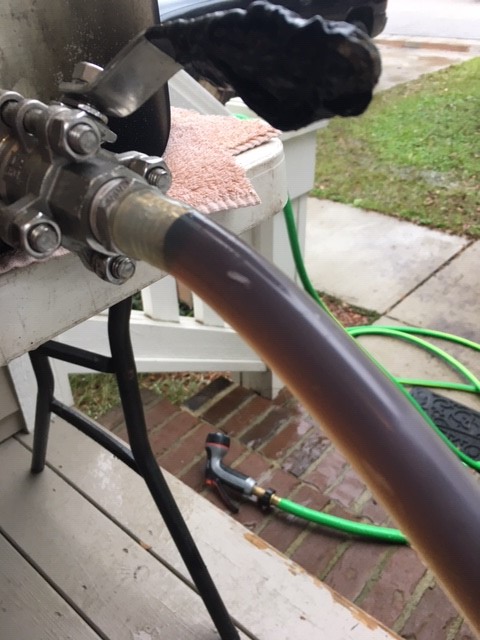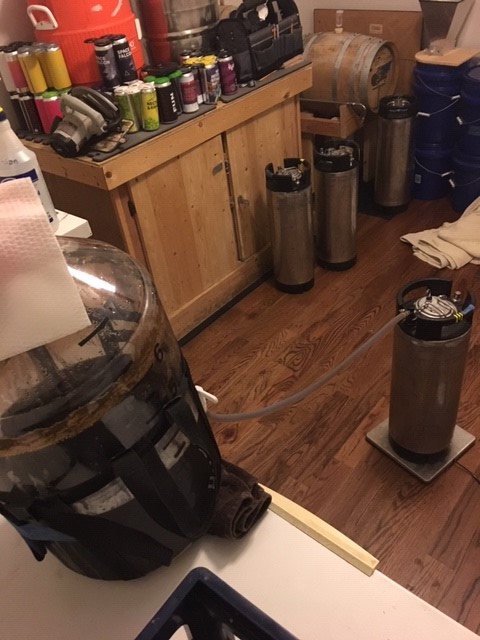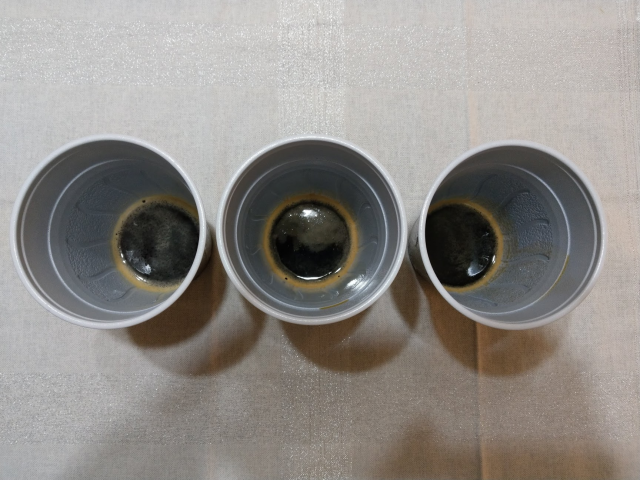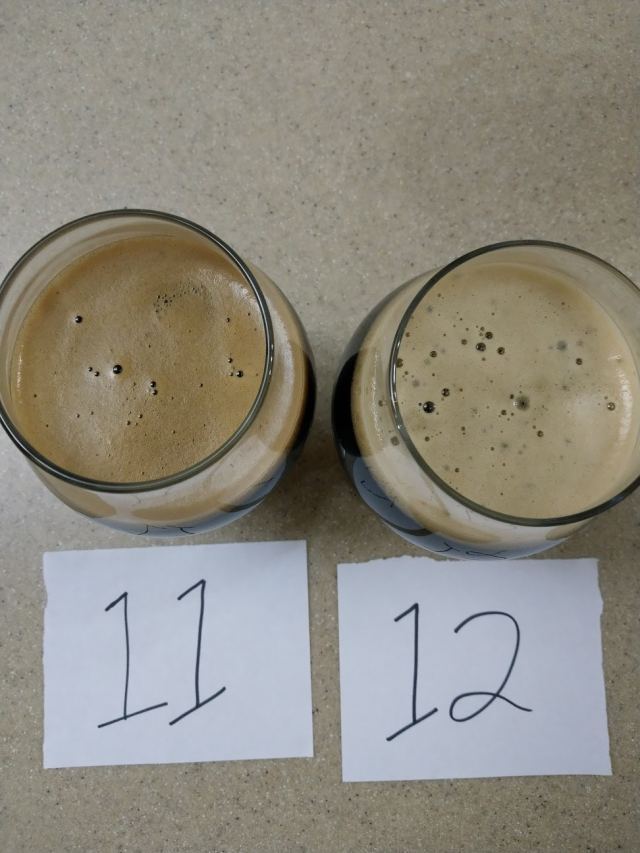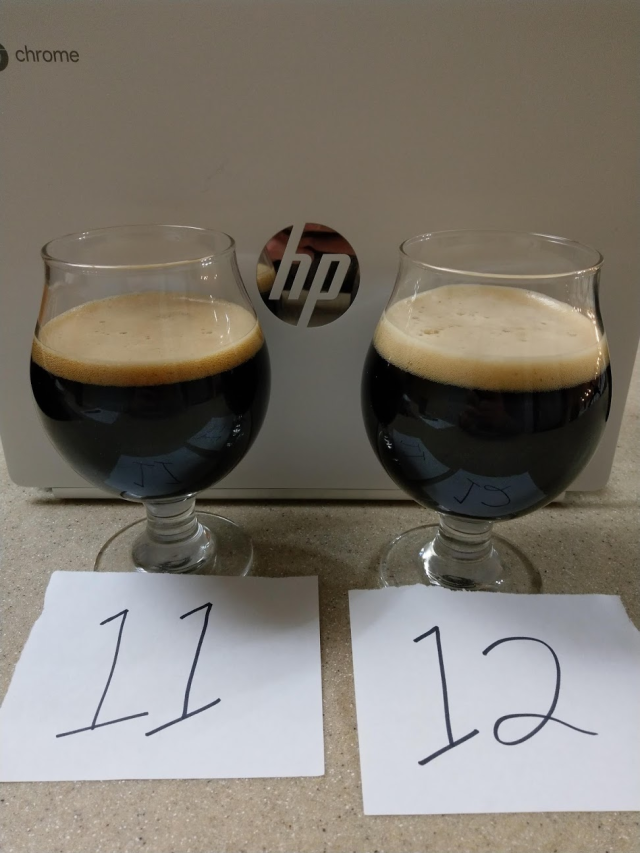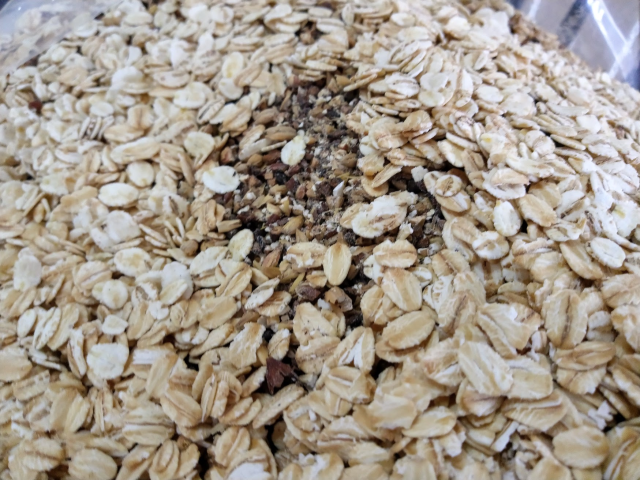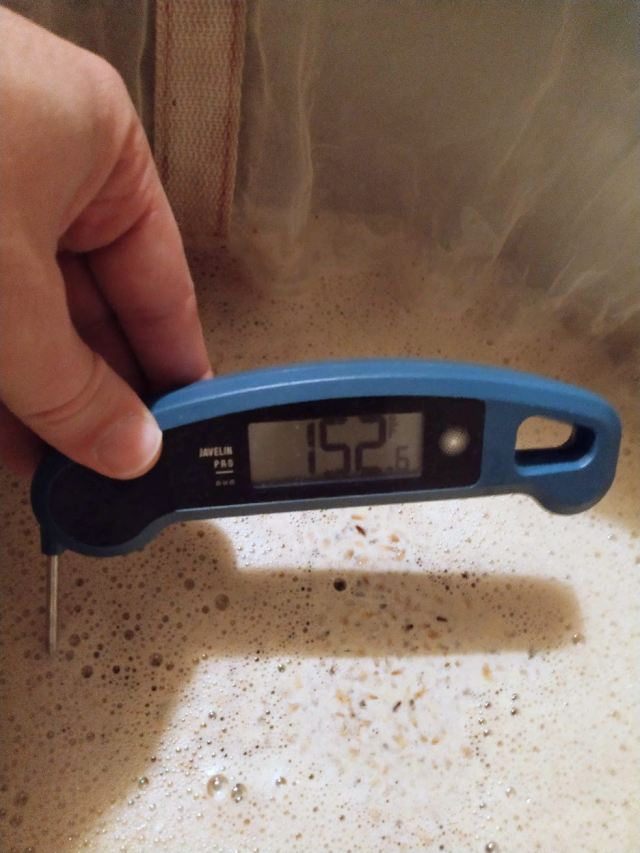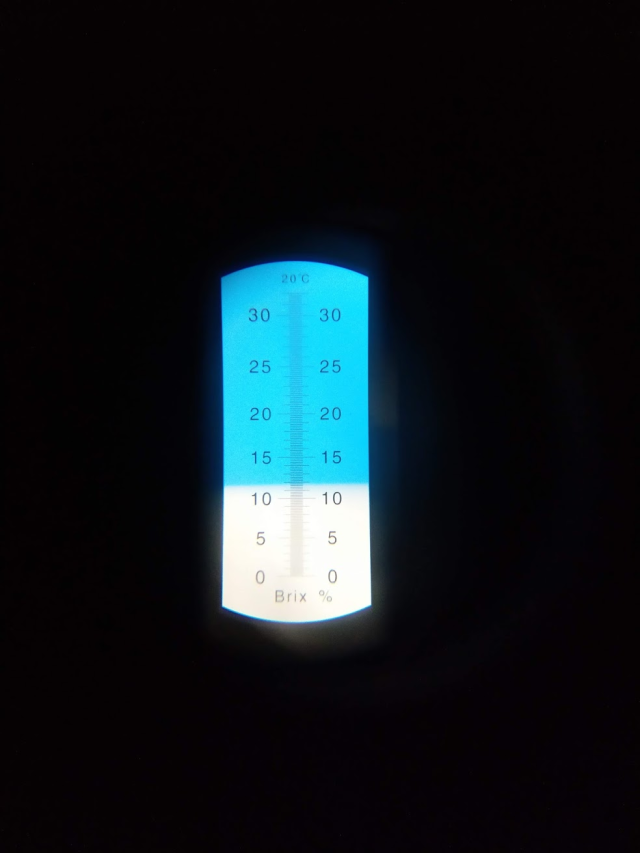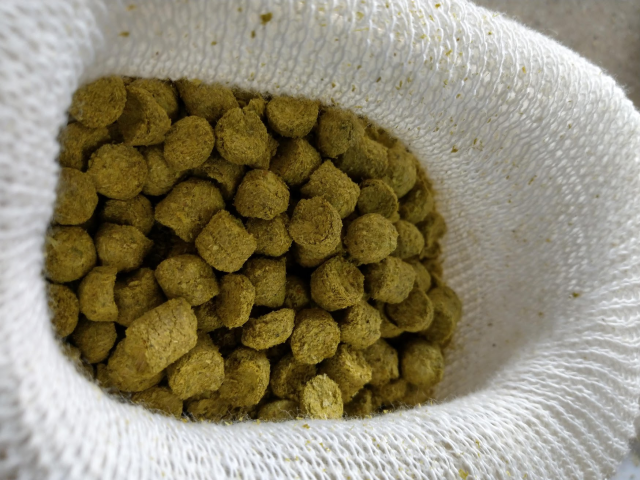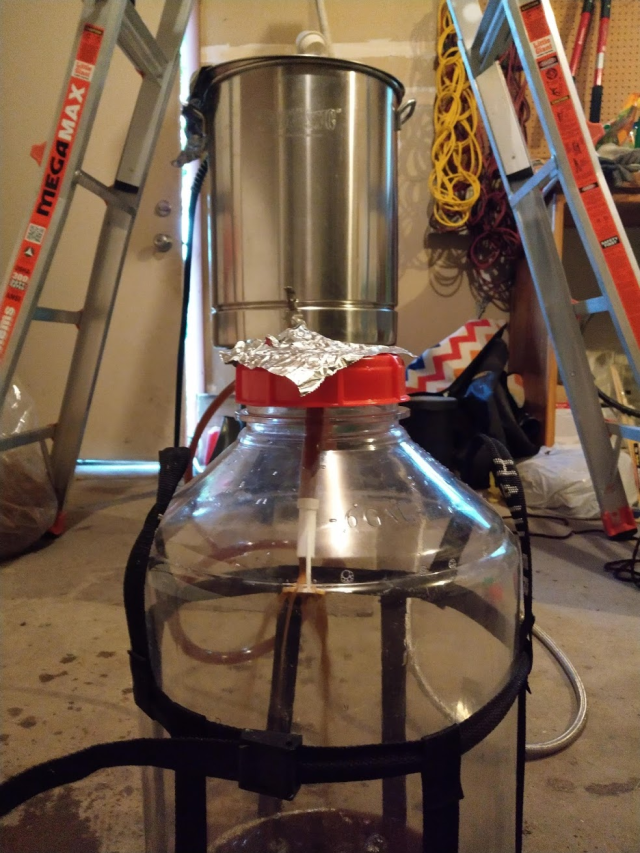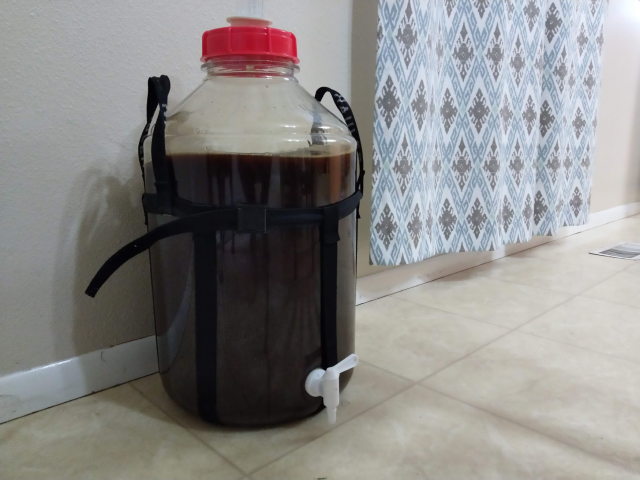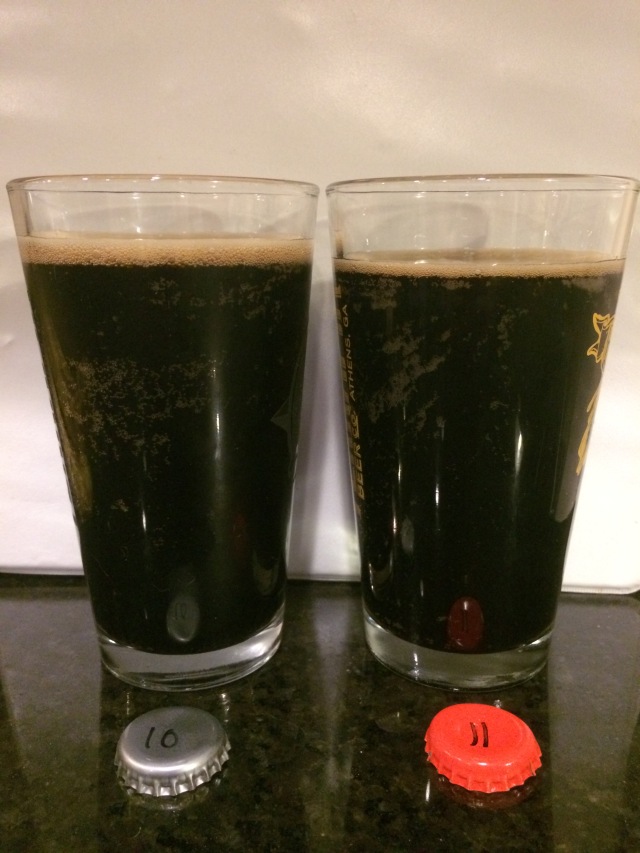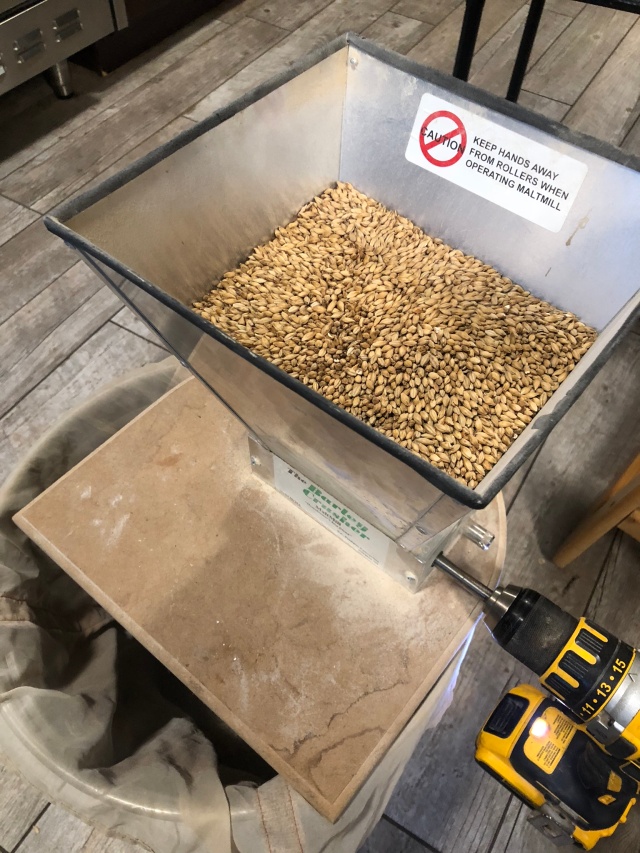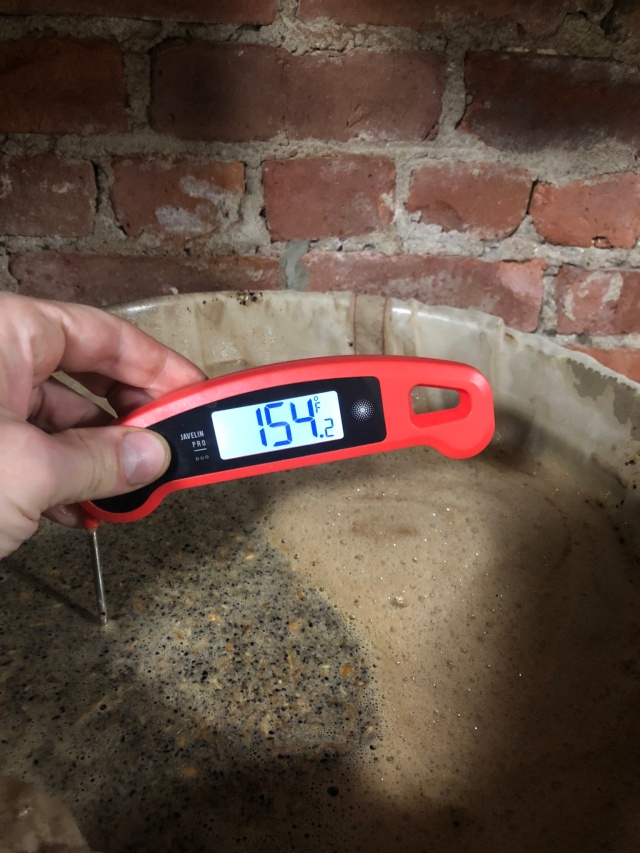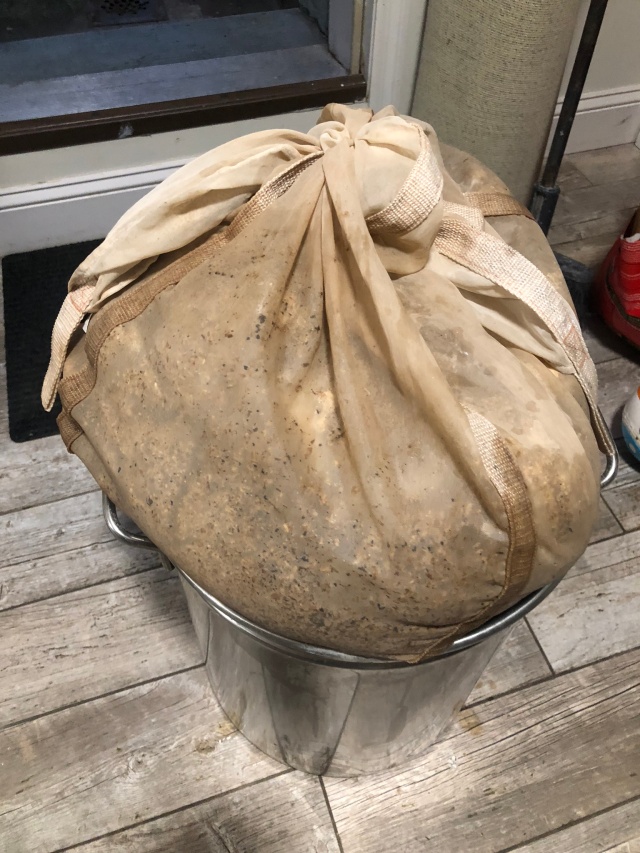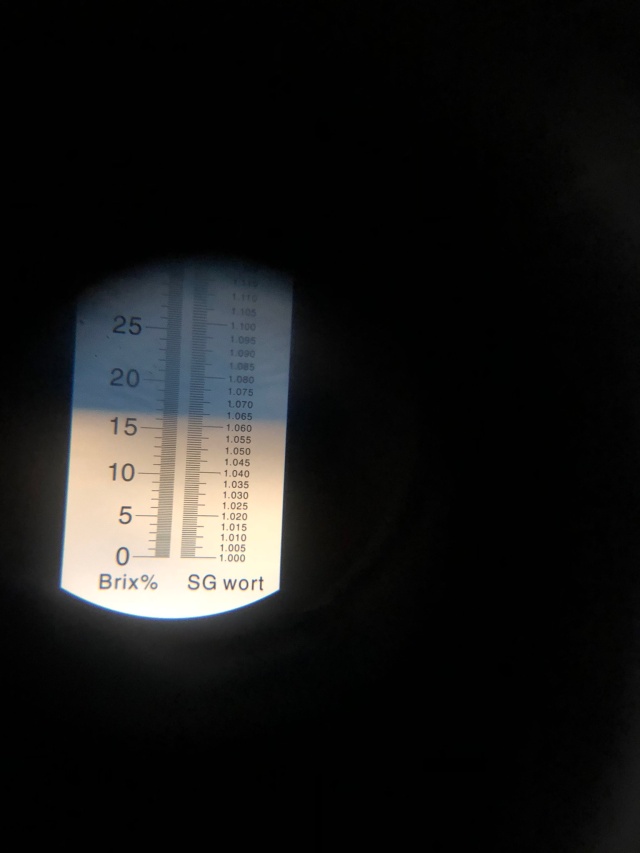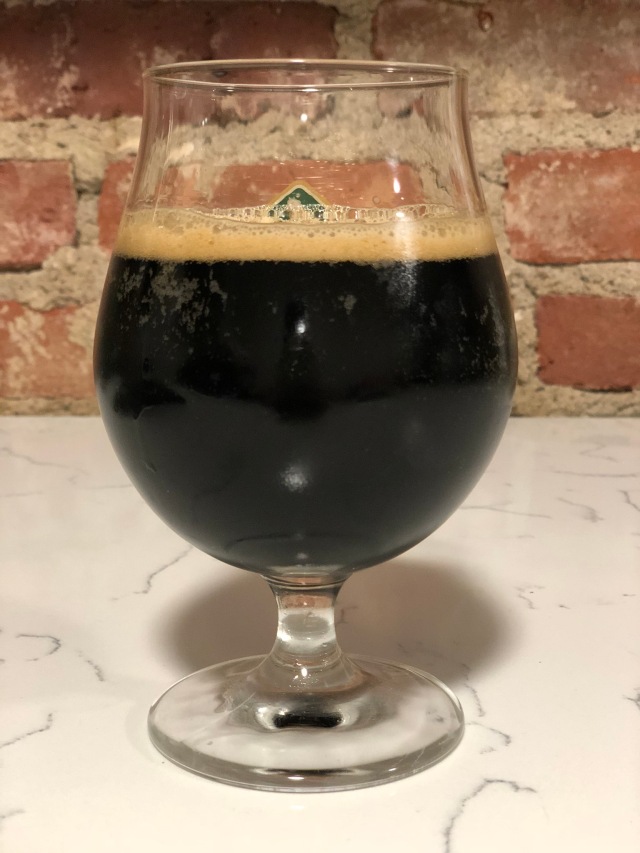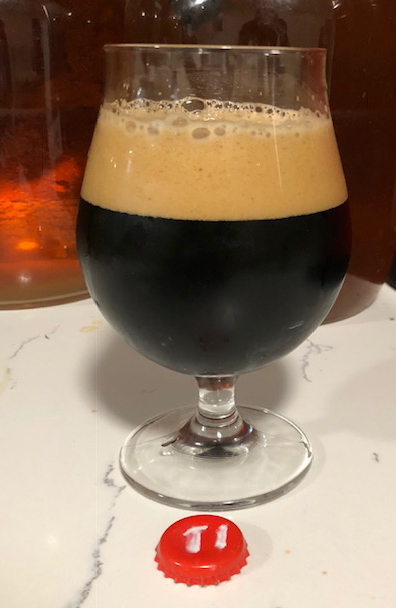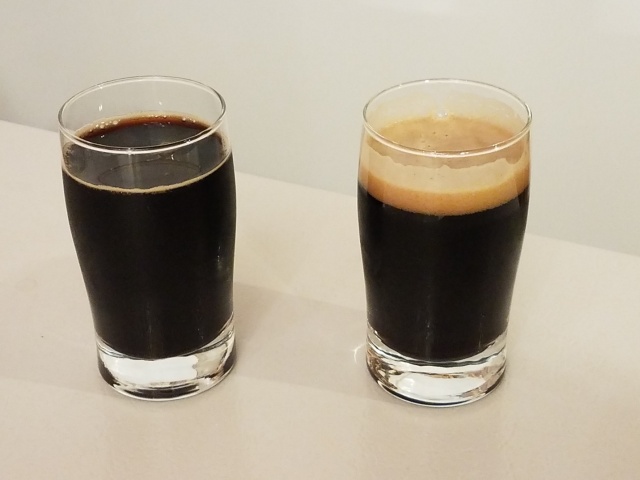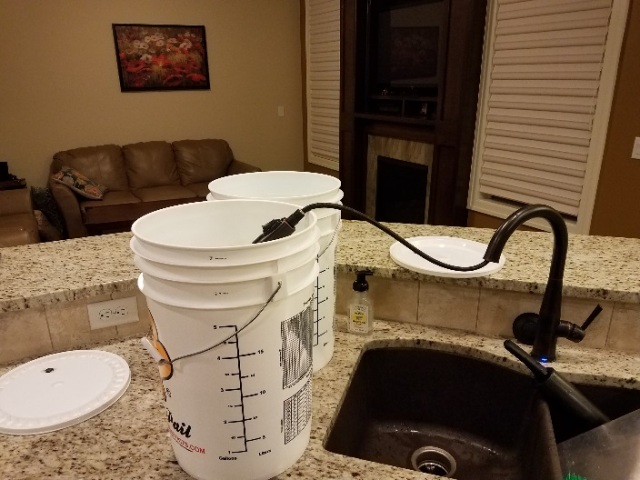This post is one in a series following five brewers limiting themselves to a select set of ingredients and brewing several beers each with only those ingredients. The goal of these limitations is to push creativity and to see what can be done within the confines of a single set of ingredients. More about this concept can be found here. The ingredients chosen for this project were Maris Otter, White Wheat (malted), Light Munich, Amarillo, Nugget, WLP810 San Francisco Lager and WLP090 San Diego Super Yeast. The brewer must use all ingredients (with the exception of choosing one yeast strain). The rest of this series can be found here.
Author: M. Rasmussen
Settling on the list of ingredients for this project was quite a task for the group. We all came in with some pretty strong opinions about certain malts, yeasts, and/or hops, so we deliberated for a while. I think the process, while arduous at times, set us up to make some really solid beers in a decently wide range of styles.
Once we narrowed down and finalized the list, my initial thought was that I wanted to brew three different styles throughout the year. There are so many different flavors and characteristics that can be highlighted with these ingredients, and I want to explore that as much as possible.
Recipe
For my first beer, I wanted to brew something that I’m comfortable with in order to get an idea of how these ingredients play with each other. My favorite beers are ales in the 12-15 SRM and 30-50 IBU range. I wanted to shoot for a cross between an amber ale and a pale ale so I could find a nice balance between the malt and hops we’re using. I was having a hard time choosing between the ale yeast and lager yeast. I finally decided on the San Diego Super Yeast, and my brewing partner decided he wanted a batch of the beer and that he’d use the lager yeast so we could compare.
Light Munich is one of my favorite malts to use, so I wanted to go a little heavier on that one since it’s the darkest of the three and I knew it would have a solid malty foundation to the beer. I figured splitting the other 50% of the malt bill between the other two malts would allow both malts’ characteristics to express themselves in the final product. I’ve used Amarillo as a flavoring hop and Nugget as a bittering hop numerous times with great results, so I designed the hop schedule around that. I wanted to try to get some flavor from Nugget coming through so the hop flavor wasn’t one-dimensional, so I added a small late addition.
After plugging everything into BeerSmith and dialing in the specifics, I still wasn’t hitting the color range I was hoping for. Even at 100% Light Munich, BeerSmith predicted only 11.5 SRM. After chatting with the rest of the group, I decided to pull a small portion of the wort out at the beginning of the boil so that I could boil it down as vigorously as possible on my stove while the main batch was boiling. I thought that might help give some darker color and complexity to the beer.
After all of these considerations, my recipe for the 10 gallon batch turned out as such:
- Mashed at 152°F for 60 minutes
- 50% Light Munich
- 25% Maris Otter
- 25% White Wheat Malt
- Boiled for 60 minutes
- 1.5 oz. of Nugget (First Wort) at 15.2%AA (41.3 IBUs)
- 1 oz. of Amarillo (15 minutes) at 7.1%AA (5.8 IBUs)
- 0.5 oz. of Nugget (5 minutes) at 15.2%AA (2.3 IBUs)
- 1 oz. of Amarillo (Flameout) at 7.1%AA (0 IBUs)
- Ale:
- 1 package of WLP090 pitched at 66°F
- Fermented at 66°F for 5 days
- Slowly raised to 72°F over 3 days
- Rested at 64-68°F over 7 days
- OG: 1.058
- FG: 1.009
- ABV: 6.5%
- 1 package of WLP090 pitched at 66°F
- Lager:
- 1 package of WLP810 pitched at 63°F
- Fermented at 63°F for 11 days
- OG: 1.058
- FG: 1.014
- ABV: 5.8%
- 1 package of WLP810 pitched at 63°F
- Kegged and quick-carbed
Brew Day
This was a pretty solid brew day altogether. There was 10 gallons of the pale brewing slightly staggered with another 5 gallons of a coconut vanilla porter. I’m still working on dialing in my BeerSmith profile on my new laptop, so I once again failed to hit my expected gravity of 1.063, undershooting it by 5 points.
The most interesting part of the brew day was my attempt to add some depth to the flavor profile and color of the beer by aggressively boiling a small portion of the wort. After the mash was finished and the grains were sparged, I pulled about a gallon of wort from the kettle and brought it to a boil on my stove.

The goal was to boil down the liquid as much as possible while the other 11 gallons were boiling in the kettle. I should have added some fermcap at the start, but I had a lapse in judgement. After checking on the kettle, I came back inside to a mini-boilover. After that was taken care of, the rest of the brew went smoothly.
When the end of the boil was nearing, I transferred the separated wort back into the main kettle. The color difference was pretty stark. I had boiled off about 75% of the original volume.

We chilled and transferred the wort into the fermentors, and I stuck my 5 gallons into my fermentation fridge to chill it down to my pitching temp. I didn’t have time to prepare a yeast starter for this batch, so once the wort had chilled down I pitched a packet of WLP090 into the wort and let the yeast take it from there.

Tasting
Ale
Appearance: Golden color. Moderately low carbonation. Good head retention. Slight lacing. Very thin head that stays for the whole glass.

Aroma: Bready malt. Light floral/citrus hop aroma.
Flavor: Strong floral hop flavor that slides into a citrus-heavy orange peel as you swallow. Malt character takes the backseat throughout the whole flavor profile. There’s a slight bit of maltiness, maybe toasted cracker, but it’s only there as a complement to the hops.
Mouthfeel: Low carbonation. Medium body.
Aftertaste: Hoppy bitterness, very light caramel, & a hint of alcohol
Overall: Balanced. Crushable.
Lager
Appearance: Golden color. Low head retention. Moderate carbonation. Active bubbling. Head dissipates quickly. Probably a symptom of being poured from a growler that was filled from the keg.

Left: Lager | Right: Ale
Aroma: Bready malt that overpowers the light hop aroma. Very reminiscent of Anchor Steam lager. Extremely similar to the ale version, but less “crisp.” Slightly more malty than the ale. Very estery.
Flavor: Hops and malt share a 50/50 balance throughout. Floral & citrus hop notes are both apparent, and neither seem to outweigh the other. The yeast esters also come through. More caramel notes than the ale.
Mouthfeel: Medium carbonation with medium body.
Aftertaste: Slight hoppy bitterness and a light caramel
Overall: Balanced. Maybe too balanced/generic? Nothing stands out as a super defining characteristic, other than this is a very easy drinking and satisfying pale ale/lager.
I’m pretty happy with how this beer turned out considering my original goals. I think one thing that would help add another layer to the beer is a small dry hop charge, since the beer doesn’t really lean towards malt or hop forward. I’ll probably brew this recipe again and throw an ounce of Amarillo and maybe a half ounce of Nugget into the fermentor for a few days before kegging.
I think the fact that we’re limited to three base grains left me wanting more depth from the malt profile of this beer. If I brew this one again without any limitations I’d definitely add some Victory and maybe a bit of Crystal 120L to add some color and complexity to the beer.
Editor’s Note: So How Much Did the Separate Mini-Boil Matter?
In an effort to quantify the impact the separate mini-boil made and in hopes of delivering new methodology to calculate adjusted SRM for anyone interested in trying this, I set out to tackle the SRM calculation formula (Morey’s). For anyone interested in what that formula looks like, here it is (note that any number of grains can be added, but for brevity below, I have only included two grains):
((((weight of grainX in lbs.*Lovibond of grainX)+(weight of grainY in lbs.*Lovibond of grainY))/post-boil volume in gallons)^0.6859)*1.4922
Example:
10.25 lbs. 2-row @ 1.8°L; 1 lb. Crystal 120 @ 120°L; 5.5 gallon batch
((((10.25*1.8)+(1*120))/5.5)^0.6859)*1.4922=13.63, rounded=14 SRM
At first glance, the calculation didn’t look too difficult, as it looked to be merely a function of grain weight and grain color, with a couple constants in there for sake of conversion between Lovibond and SRM. Granted, math isn’t my forte, but I assumed that this could be manipulated easily enough with some simple algebra.
After plugging in the variables provided from the brew above into the equation (i.e., ignoring the separate boil) and assuming the same final volume, I ended up with a (rounded up) SRM value of 10. I then took the additional information provided (mini boil volume, original volume to determine some percentage values that I thought would be helpful, etc.) and began using the given scenario to manipulate the formula and come up with a method to make this equation work for the two separate volumes.
After determining a method I thought made sense, I began to question this whole concept, realizing that it might very well not matter if I manipulated the equation or not since one of the variables is the final (or post-boil) volume of the beer. Again, knowing that math is not my forte, I sent the equation and my ideas to a friend of mine who is a mathematician. I had him review my methodology and logic, and he concluded what I had begun to suspect: there isn’t a way to split this up since the volume itself plays a large role in the final outcome.
Ultimately, to manipulate SRM value without adding darker grains, one either needs (a) more grain or (b) to collect a lesser amount of post-boil wort, both of which will impact the gravity of the wort. An idea that sounded good at first glance, might have ended up not making an impact on the color. That isn’t to say that it couldn’t have had other impacts, but without a side by side comparison, there’s only speculation.
Recipe Comparison
Note: Some disparity in IBU contributions for flameout and whirlpool additions will exist in the chart below due to variation in recipe calculator software amongst contributors.
| Beer 1 | Beer 2 | |
| Style | Hoppy Wheat | Pale Ale/Lager |
| Maris Otter | 34.4% | 50% |
| Light Munich | 5.5% | 25% |
| Wheat | 60.1% | 25% |
| Hop Addition 1 | 28.7 IBUs Nugget (60 min.) | 41.3 IBUs Nugget (First Wort) |
| Hop Addition 2 | 5.5 IBUs Amarillo (5 min.) | 5.8 IBUs Amarillo (15 min.) |
| Hop Addition 3 | 7.1 IBUs Nugget (5 min.) | 2.3 IBUs Nugget (5 min.) |
| Hop Addition 4 | 16.8 IBUs Amarillo—30 min. Whirlpool | 0 IBUs Amarillo (flameout) |
| Hop Addition 5 | 22 IBUs Nugget—30 min. Whirlpool | N/A |
| Dry Hop | 2.5 oz. Amarillo, 2 oz. Nugget (10 days) | N/A |
| Yeast | WLP090 at 64°F, raised to 70°F | WLP090 at 66°F, raised to 72°F; WLP810 at 63°F |
| OG | 1.059 | 1.058 |
| FG | 1.012 | 1.009/1.014 |
| ABV | 6.2% | 6.5%/5.8% |
















